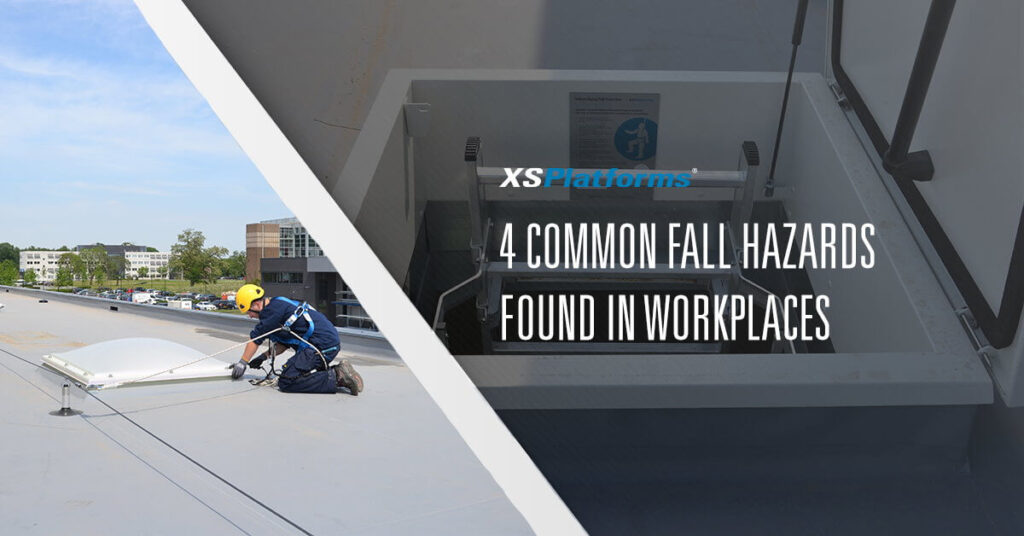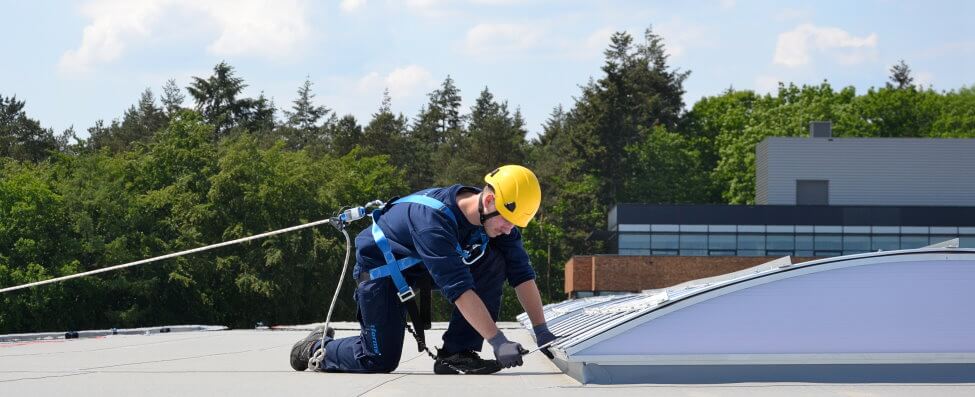
Safe + Sound week is an American initiative to recognize the success of good health and safety programs in the workplace. Successful health and safety programs not only help identify workplace hazards, they also help prevent accidents at work. As falls from heights are still a very common workplace accident, Safe + Sound Week is an ideal time to pay extra attention to this risk in your workplace. While Safe + Sound Week may originate in the United States, every employer, worldwide, can participate in it to help keep their workers safe.
The need for fall protection is generally very obvious. Falls from height are one of the top accidents at work, and they often have deadly consequences or cause serious harm. Especially falls from relatively low levels, for example from scaffolding, or falls through structures, such as skylights occur frequently.
In this blog we want to highlight some common work at height hazards. You can use this information to help recognize fall hazards in your workplace, and to take preventative measures. During a workplace safety inspection keep a lookout for these hazards:
Roof access
How does a person working at height enter the workplace? Roof access is often achieved via an external fixed ladder, or via a roof hatch. But these means of access provide a fall hazard of their own, both when entering the roof, as well as when leaving the roof surface. When there is no barrier in place a worker can fall into (or next to) the ladderway, or open roof hatch. For this reason a guardrail system must be in place on all exposed sides, and the entrance to the, so-called, hole, must be covered with an offset or self-closing gate.

Skylights
As stated earlier falls through skylights are a serious issue. The problem with skylights is that many people think they are safe to lean on, but most skylights are not manufactured to withstand a person leaning, or standing on the skylight. Most fall protection regulations see skylights as holes in the floor, and as such fall protection measures need to be taken. You can protect workers by placing (non-penetrating) guardrails around a skylight, or by using a lifeline system or anchorage point with a harness and a lanyard.
Read more about skylight fall protection in this blog.
Falling objects
Falling objects are a great hazard in workplaces. The falling objects can either strike people and cause injuries, or strike materials or machinery and cause damages. For this reason tools need to be tied off and toeboards need to be installed on, for example, scaffolding or roof edge guardrails.
Read more about the hidden danger of falling tools, and how to prevent them.
Unprotected edges
Unprotected edges are one of the most well-known fall hazards. They are all the edges where fall hazards exist and where safety measures need to be taken. In the United States this is from 4ft and higher, in the United Kingdom this is any edge a worker can fall from. Unprotected edges exist in many workplaces, think of roof edges, loading docks, factory walkway and so on.
